11445 A RARE GILTWOOD OVERMANTEL MIRROR SET WITH PANELS OF MUGHAL INSPIRED CARVED GEOMETRIC TRACERY India. Circa 1870. Measurements: Width: 64″ (162 cm); Height: 60 1/2″ (153.5 cm); Depth: 3″ (7.5 cm).
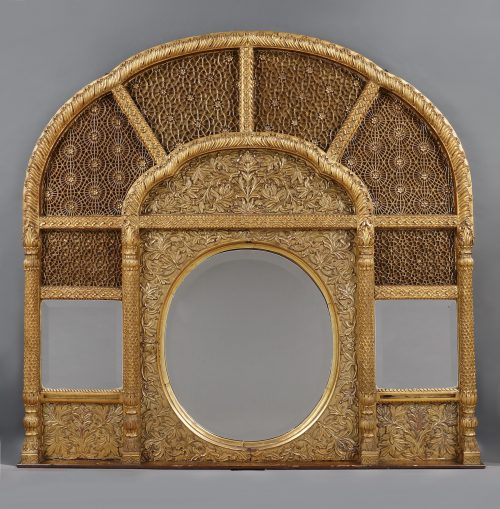
Research
Of carved and gilt teakwood. The central oval mirror glass set into a rectangular panel of carved foliate decoration, flanked on each side by two smaller square mirrors with carved foliate panels below and pierced geometric panels above, and all flanked by four palm-like columns. The upper arched section with conforming shaped foliate carving to the outer edge of frame center shaped center carved panel, surrounded by four pierced geometric panels of various starburst designs. Each panel separated by carved borders of repeating rosette pattern. The outer edge of the entire frame with conforming carved rosette decoration to the top and palm motif to the lower section.
Marks:
Very old chalk inscription on back: “Leighton“
This very interesting 19th century mirror is carved from solid teak, the most important timber of India, “used for the more valuable and expensive articles of house-fitting and furnishing”1 and is a remarkable exercise in the use of ornament from the Indian architectural canon. Its overall composition recalls the successive arched doorways of India’s iconic 17th century structures such as for example, the Khas Mahal in Delhi (figure 1). The mirror frame’s surface incorporates numerous twelve point star patterns within its tracery carved panels, certainly based on Mughal geometric ornamental design, where stars were a keynote. The Indian scholar George Michell summed up Mughal geometry in design, writing: “Geometry was never a mere adornment in Mughal style, rather it was a means of evoking a world that lay beyond human experience.”2
The various decorative elements that make up the present mirror were likely sourced from Indian stone and woodwork. The six pierced panels of the present mirror are akin to pindra-kari an Islamic geometric latticework of intricately joined turned wood. This type of woodwork was largely employed on screens and mashrabiya, projecting window balconies found in the Middle East and India.
The central and lower panels of the mirror contain a network of relief carved foliate decoration which, together with the four palm-like columns in particular, recalls the type of ornament found on a stone screen at Muttra, published in the Journal of Indian Art, Volume 1, page 257 (figure 2).
It is a further particular aspect of the very high level of craftsmanship and design quality of this piece that even the sides are fully carved and gilded.
In the late 19th and early 20th century Mughal decorative vocabulary was introduced and adapted into the Victorian arts by proponents of the Arts & Crafts movements who sought to defend and promote the traditional crafts of India. Domestic and International exhibitions in various cities in India, such as Calcutta in 1883 and Delhi in 1903 (figure 3), aided in disseminating the taste.
John Lockwood Kipling (1837-1911) was a British sculptor, curator and professor who spent nearly three decades living and teaching in India, and organizing such exhibitions. He also served as the editor of the Journal of Indian Art and Industry, which provided scholarly articles on Indian decorative arts, many of which served as pioneering studies in the field. Other champions included Louis C. Tiffany (1848-1933) and his collaborative of designers called Associated Artists. Apart from Tiffany, the influence of Eastern architectural motifs was especially apparent in the work of his fellow designer Lockwood de Forest (1850-1932).
“De Forest in particular drew upon Indian design and craftsmanship at the Ahmedabad Woodcarving Company that he established in 1881 together with the businessman Maganbhai Hutheesing in Ahmedabad, in the Indian state of Gujerat. From here, he supplied ornate wooden furniture and carved woodwork for American interiors, samples of which were also displayed at Lockwood Kipling’s 1881 Exhibition of Indian Art in Lahore, London’s Colonial and Indian Exhibition of 1886, and the Chicago Exposition.”3 “His aim was not simply to provide exotic and unusual goods, rather, he sought to preserve certain artisanal skills and indigenous Indian design motifs, especially those associated with wood carving.”4
Through these designers, Eastern decorative arts made their way into the homes of some of the most affluent Europeans and Americans during the late 19th century, as well as into their own houses and showrooms. For example, “Tiffany…had traveled through Spain and North Africa in 1875 and expressed his fascination with the Islamic patterns he saw there in a shimmering Moorish salon he designed for George Kemp,”5 while Lockwood de Forest’s showroom at 9 east 17th Street in New York made extensive use of geometrically carved teakwood panels (figure 4).
Overmantle mirrors related to the present example were incorporated into some of these homes,including the drawing room in the house of Mr. Hamilton Fish (figure 5) and the parlor of Mr. J. Taylor Johnston (figure 6), while an elaborate arrangement of mashrabiya panels was employed in the hall at the home of Mr. W.S. Kimball (figure 7). All of these schemes were the product of Louis C. Tiffany. Not only did he source the decorative elements from the Ahmedabad Wood Carving Company for his projects, he eventually formally took over the firm and its inventory from de Forest in 1908.
Intriguingly, the present mirror is inscribed ‘Leighton’ in white chalk to the reverse. British painter and sculptor Sir Frederick Leighton is a tempting possible candidate as the original owner; he had a particularly keen interest in Eastern design, evidenced by his travels to North Africa and the Middle East, and collection of Islamic, Japanese and Indian art objects. Over thirty years, his London home and studio grew into a ‘private palace of art.’6 It was designed in 1864 by the architect George Aitchison, a Professor of Architecture at the Royal Academy and President of the Royal Institute of British Architects. Aitchison worked on the home for over 30 years, expanding it three times. The second extension, in 1877, comprised the construction of the ‘Arab Hall,’ with a golden dome and intricate mosaics, served to display the artist’s collection of Islamic tiles. Leighton’s house was a “pioneer example of the Aesthetic movement” and “in decorating his home, [he] employed a number of artists and firms associated with the Arts & Crafts,”7 including William Morris and Gertrude Jekyll. On his death, a letter from his sisters to The Times, 26 January 1899, describes Leighton’s feelings towards his home: “He built the house as it now stands for his own artistic delight. Every stone of it had been the object of his loving care. It was a joy to him until the moment when he lay down to die.”8
Footnotes:
- Burn, Richard, James S. Cotton, William W. Hunter, William S. Meyer, and Herbert H. Risley. The Imperial Gazetteer of India… Volume III. Oxford: Clarendon Press, 1907. 227.
- Michell, George, and Mumtaz Currim. The Majesty of Mughal Decoration: The Art and Architecture of Islamic India. London: Thames & Hudson, 2007. 68.
- Arora, Anupama, and Rajender Kaur. India in the American Imaginary, 1780s-1880s. Cham: Palgrave Macmillian, 2017. 261.
- Mayer, Roberta A. The Aesthetics of Lockwood de Forest: India, Craft and Preservation. The Henry Francis du Pont Winterthur Museum, 1996. 1.
- Mayer, Roberta A. “Lockwood and Meta De Forest in India, Kashmir, and Nepal.” Archives of American Art Journal / Ed.: Paul Cummings. 522013 (2013): 44-57. 45.
- https://www.rbkc.gov.uk/subsites/museums/leightonhousemuseum/aboutthehouse.aspx
- Edwards, Jason, and Imogen Hart. Rethinking the Interior, C.1867-1896: Aestheticism and Arts and Crafts. , 2017. 85-88.
- “History of the House.” Leighton House Museum, Royal Borough of Kensington and Chelsea, Webmaster@Rbkc.gov.uk, www.rbkc.gov.uk/subsites/museums/leightonhousemuseum/aboutthehouse/ aboutleightonhouse/historyofthehouse.aspx.




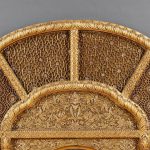
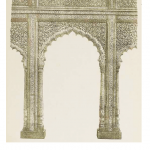

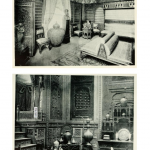

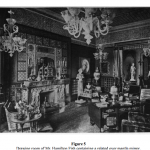
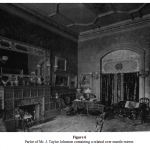
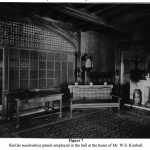

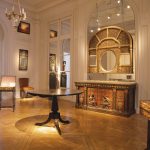
Comments are closed.